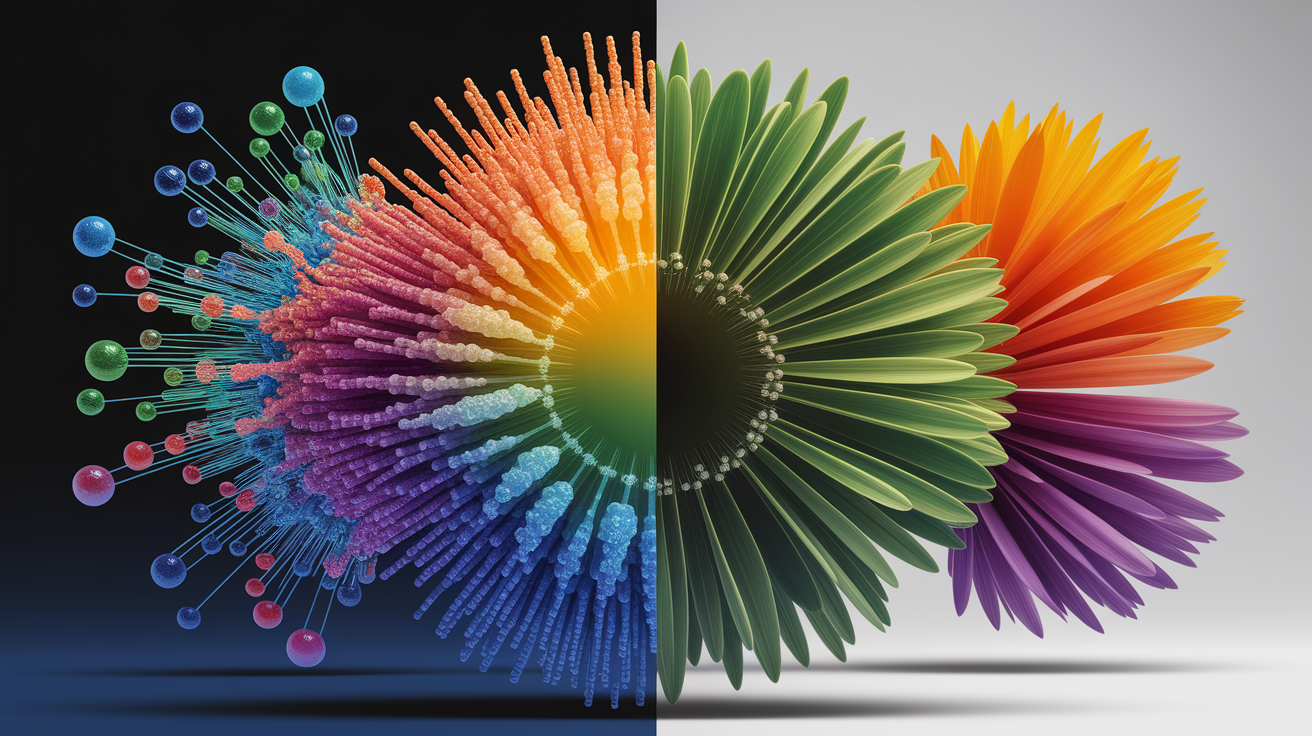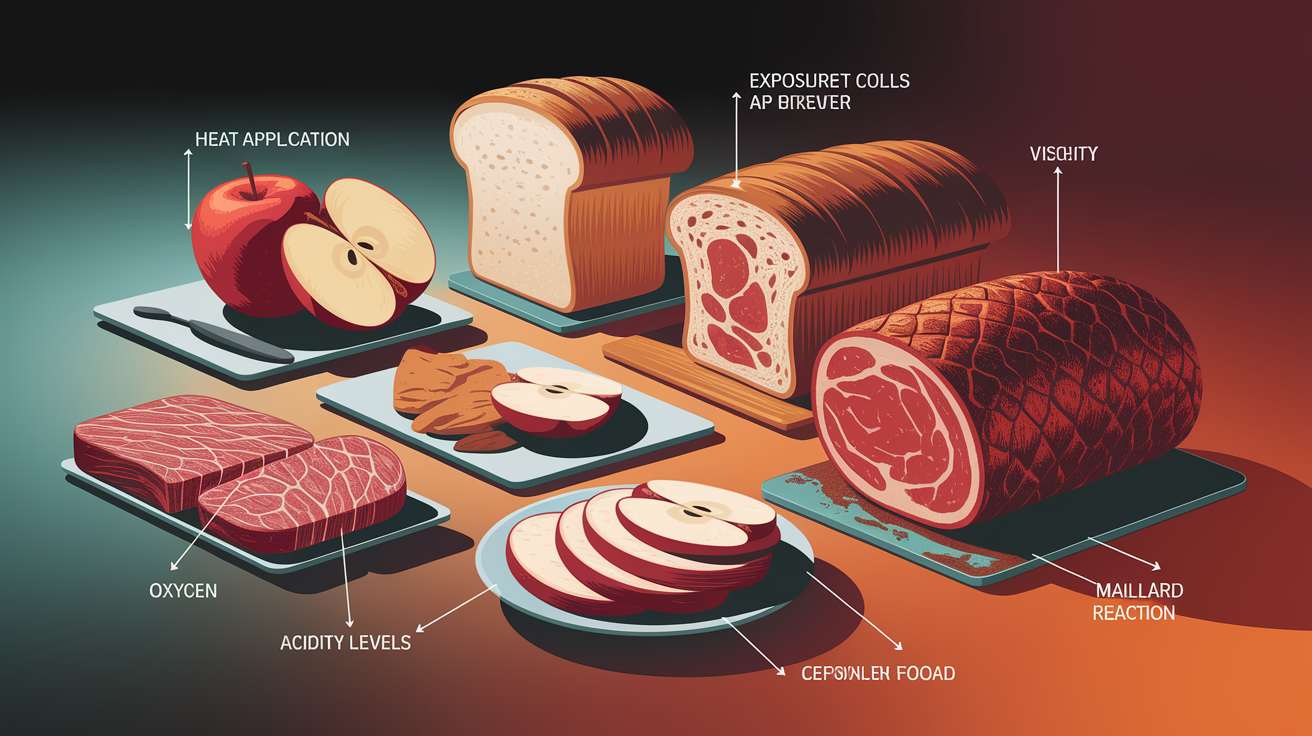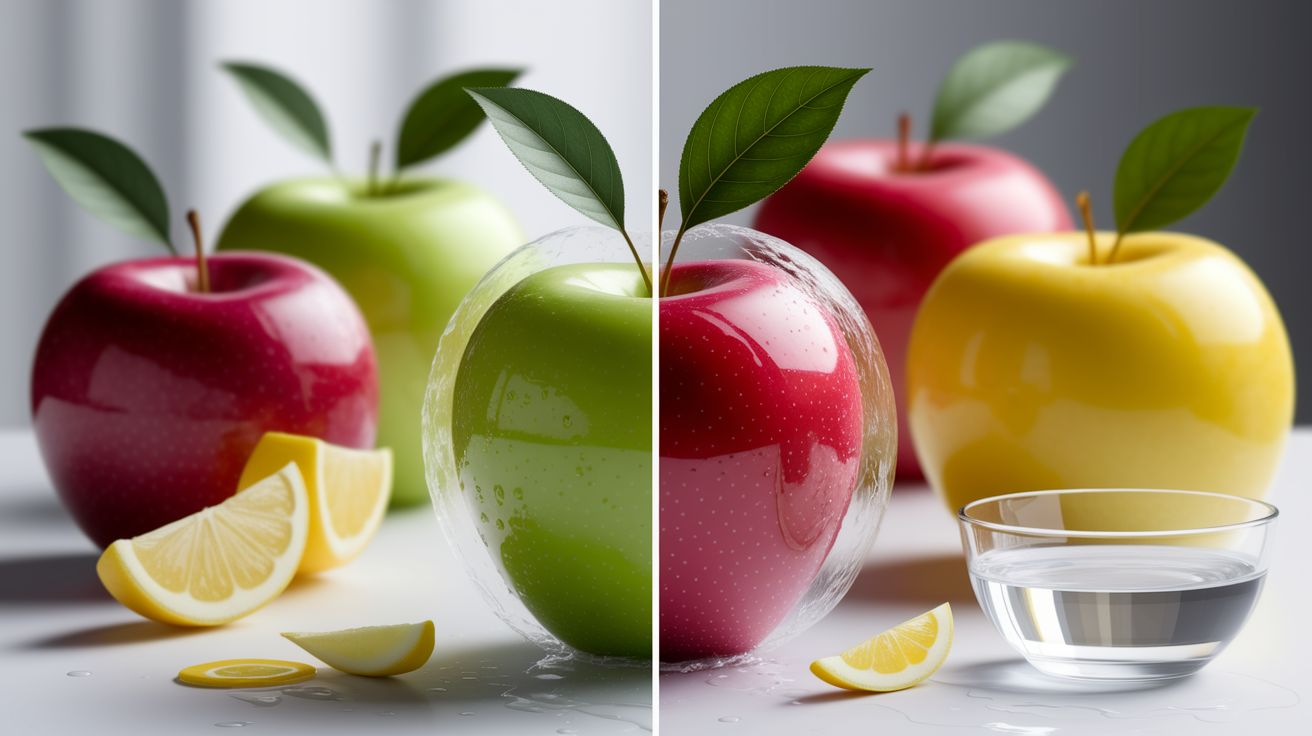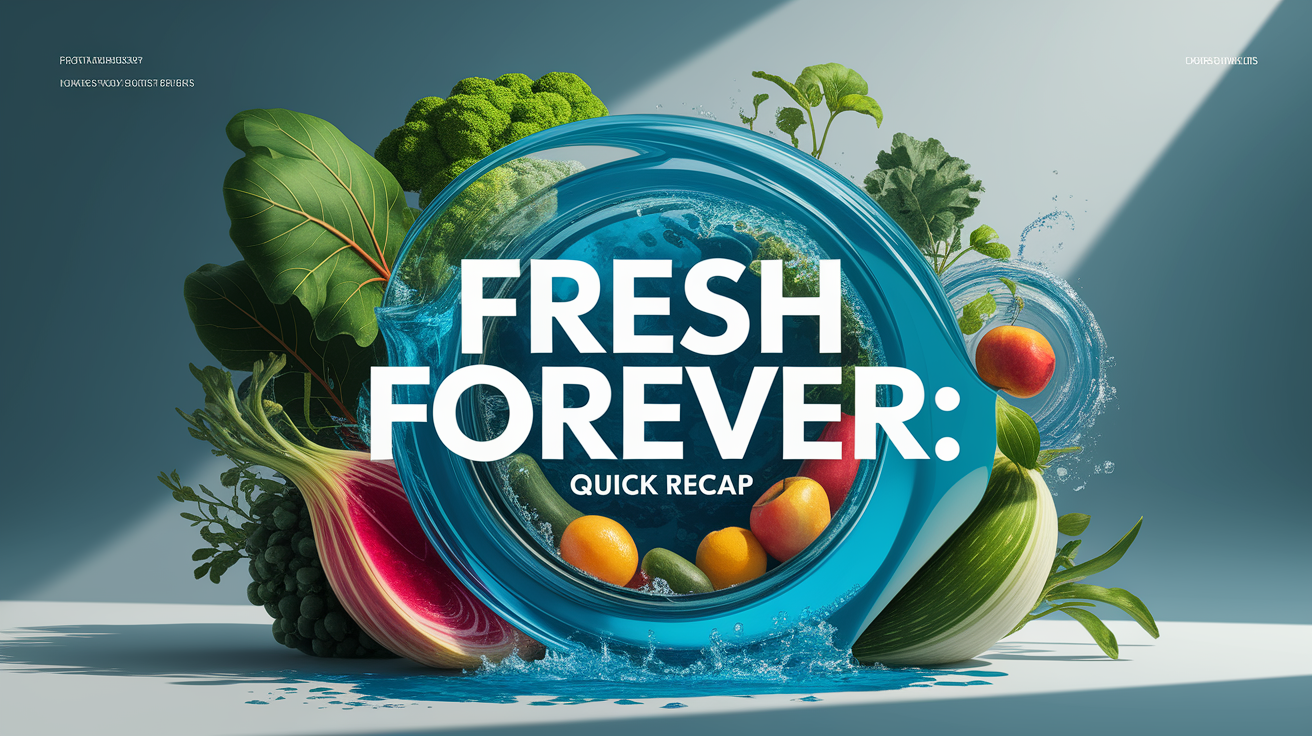Quick Answer: Apples turn brown when an enzyme inside them, called polyphenol oxidase (PPO), is exposed to oxygen from the air after being cut or bruised. This triggers a chemical reaction that creates a brown pigment. You can easily slow down this browning process by using acidic juices like lemon, soaking slices in water, or storing them in the refrigerator to limit air exposure and inhibit the enzyme.
The Browning Mystery Unveiled
It’s a familiar story: you slice a crisp, beautiful apple for a snack or a fruit salad, but by the time you’re ready to eat, it has developed unappetizing brown patches. What’s going on here? Why do apples turn brown after cutting? This phenomenon, known as enzymatic browning, isn’t a sign of rot or spoilage. It’s a harmless, natural chemical reaction.

So, the first question to clear up is: can you eat apples after they have browned? Absolutely! A browned apple is perfectly safe to eat. The color change might slightly alter the texture and flavor, but it poses no health risks. The real issue is that it just doesn’t look as fresh or appealing. Thankfully, with a little bit of science, you can easily keep your cut apples looking pristine.
The Science Behind the Color Change
To understand how to stop the browning, we first need to look at what scientific process causes apples to brown after cutting. It’s a fascinating chain reaction that happens at a microscopic level, involving three key players: an enzyme, some special compounds, and oxygen.

- Polyphenol Oxidase (PPO): Inside the apple’s cells, there is an enzyme called polyphenol oxidase, or PPO. Think of this enzyme as a tiny factory waiting for instructions. It’s a common feature in many plants and is responsible for similar browning in pears, bananas, and potatoes. This is just one of many amazing enzymatic reactions found in our food; a different one is responsible for the chemical process that makes you cry when cutting onions.
- Phenolic Compounds: Also stored within the apple’s cells are substances called phenolic compounds. These are the raw materials that the PPO factory will work on. In a whole, undamaged apple, the PPO and the phenolic compounds are kept in separate compartments within the cells.
- Oxygen: The final ingredient is oxygen, which is all around us in the air.
When you slice, bite, or bruise an apple, you break open its cells. This allows the PPO enzyme and the phenolic compounds to mix together. With oxygen now available from the air, the PPO factory kicks into high gear. The enzyme rapidly transforms the phenolic compounds into new chemicals called quinones. These quinones then react with each other and with amino acids to form a brown-colored pigment called melanin—the same type of pigment that colors human skin and hair. This entire process is a form of oxidation, and it’s the reason your apple turns brown.
Key Factors That Speed Up Browning
Not all apples brown at the same speed. The rate of the browning reaction is influenced by several factors. Understanding them is key to learning how to keep apples from browning.

- Apple Variety: Why do some apple varieties brown faster than others? It comes down to their internal chemistry. Apples like Granny Smith and Red Delicious have higher levels of PPO and phenolic compounds, causing them to brown quickly. Others, such as Honeycrisp or Gala, brown more slowly. There are even genetically modified apples, like the Arctic® Apple, that are designed not to brown at all because they produce virtually no PPO.
- Acidity (pH): The PPO enzyme works best in a neutral pH environment (around pH 7). Acidic conditions disrupt the enzyme’s shape and structure, effectively deactivating it. This is why a little bit of acid can dramatically slow down browning. The effect of acidity on enzymes is similar to how pH changes can alter the color of red cabbage, highlighting how acidity influences chemical structures.
- Temperature: Warmer temperatures can speed up most chemical reactions, and enzymatic browning is no exception. Storing cut apples at cooler temperatures, like in the refrigerator, helps to slow the PPO enzyme down.
- Oxygen Exposure: The more surface area of the apple is exposed to air, the faster it will brown. This is why a whole apple lasts for weeks, but a sliced apple can brown in minutes.
Simple Ways to Keep Apples Looking Fresh
Now for the practical part! Armed with our scientific knowledge, we can easily outsmart the browning process. Here are some of the best home remedies and effective methods to prevent apple browning, perfect for a fruit salad or a lunchbox.
Use an Acidic Solution
This is one of the most popular and effective methods. The acid lowers the pH on the apple’s surface, inhibiting the PPO enzyme.
- Lemon Juice: Does using lemon juice really stop apples from browning? Yes! It’s a fantastic choice because it contains both citric acid (to lower pH) and ascorbic acid (Vitamin C), which is an antioxidant that directly interferes with the oxidation reaction. A common question is how long lemon juice keeps apples from browning—typically, it can keep them fresh for several hours. Just toss the slices in a little bit of juice or a mix of juice and water.
- Other Juices: Pineapple juice and orange juice also work well for the same reason.
Submerge in Water
Does soaking apples in water prevent browning? Yes, because it creates a physical barrier that blocks oxygen from reaching the apple’s surface. This is a great, simple technique if you don’t want to add any extra flavor.

- Plain Water: A simple soak for a few minutes can help. For longer storage, a salt water or honey water solution is even more effective. A brief soak in a solution of 1/2 teaspoon of salt per cup of water can keep apples fresh for hours. Just be sure to give them a quick rinse before eating to remove the salty taste.
Limit Air Exposure
If you can stop oxygen from getting to the apple, you can stop the browning reaction before it starts.
- Wrap Them Tightly: If you’ve only cut an apple in half, you can press the halves back together and secure them with a rubber band. For slices, pressing them tightly together and wrapping them in plastic wrap can work wonders for a lunchbox.
- Vacuum Sealing: For longer-term storage of cut apples, vacuum sealing is an excellent way to remove all the air.
Cook Them
Heat is another way to stop enzymes in their tracks. Cooking or blanching apples (a quick dip in boiling water) denatures the PPO enzyme permanently. This is why the apples in a cooked apple pie never turn brown. This is one of the most effective methods to prevent apple browning for baking.
Fresh Forever: Quick Recap
That unsightly browning on your apples is just a harmless chemical reaction, but it’s one you can easily control. Remember the core science: an enzyme (PPO) plus plant compounds plus oxygen equals browning.

To keep your apple slices looking crisp and fresh, all you need to do is interfere with that simple equation. You can either block oxygen with water or plastic wrap, or you can deactivate the enzyme with a bit of acid from lemon juice or by chilling the slices in the fridge. With these simple tricks, you can enjoy perfectly fresh-looking apples anytime you like.













